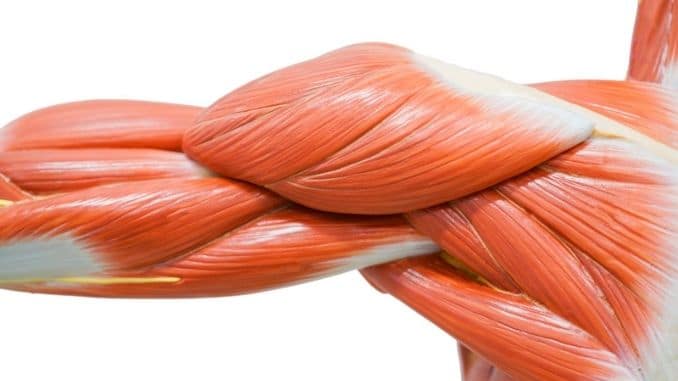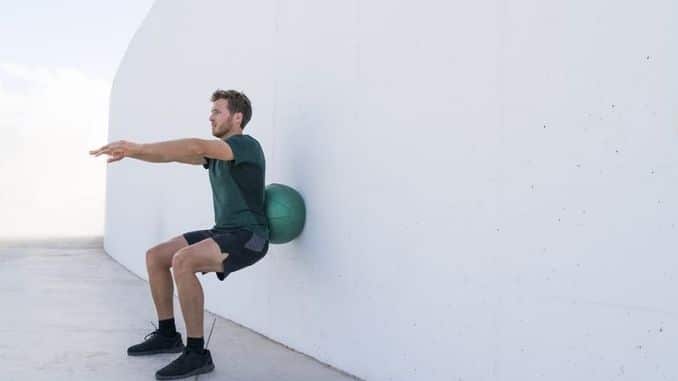![Muscle_Imbalance_Training[1] Muscle_Imbalance_Training[1]](https://kcdn-dfbd.kxcdn.com/wp-content/uploads/2011/09/Muscle_Imbalance_Training1.jpg)
Muscle imbalances can cause pain and injury during exercise, particularly in the shoulder, hip, and knee joints. Muscle imbalances occur when one side of the body is stronger than the other or if you have more muscle on one side of your body than on the other. Many factors contribute to a muscle imbalance, including overuse of one side of your body or not training both sides equally.
The modern world is fast-paced, and many spend most of their time sitting at a desk or hunched over a computer screen. Unfortunately, this can lead to an imbalance in strength between the right and left sides of the body. Muscle imbalances occur when one side of your body is stronger than the other. Common examples include more muscular biceps on one arm or side of your back being more potent than the other. This imbalance has been linked to various medical conditions, including depression, cardiovascular disease, and diabetes.
What is a muscle imbalance?
A muscle imbalance occurs when one side of your body is stronger than the other. Common examples include more muscular biceps on one arm or side of your back being more potent than the other. Muscle imbalances often develop over time due to long-term poor posture, repetitive movements, or overuse of specific muscles. If you sit at a computer all day, you will likely be overusing the muscles in your upper back and underutilizing the strengths in your chest. This uneven use of the forces can lead to an imbalance that can cause pain and injury.
Why do we have muscle imbalances?
Muscles need to be worked out in pairs to balance the body. When you have a muscle imbalance, you are working out on one side and not the other, resulting in an imbalance where one side is stronger than the other. To prevent muscular imbalances from occurring, it’s essential to keep your muscles balanced. This means working out both sides of your body equally so that neither side gets more potent than the other. In addition to preventing imbalances, maintaining muscle balance helps prevent injuries and other health issues that may arise from a muscular imbalance.
Foam Rolling
Foam rolling is a technique that uses a cylindrical piece of dense foam to massage and stretch your body’s soft tissue. It releases soft tissue and relieves muscle tension. It’s a great way to ease muscle tension and get the blood flowing to perform your exercises better. Foam rolling can target every part of your body, but it’s beneficial for targeting your hamstrings and calves, IT band, glutes, and upper back. For best results, use a slow, controlled motion when foam rolling. You can do your foam rolling either before or after your workout. If you do it before your workout, you can help improve your range of motion and warm your muscles up for your workout. If you do foam rolling after your workout, you can help relieve soreness and relax your muscles.
Strength Training
It is important to perform strength training exercises targeting multiple muscle groups to promote muscle balance and enhance strength and health. Some best practices for balancing muscle strength include squats, lunges, leg presses, and leg or hip extensions. These exercises target multiple muscle groups in your legs and hips, including your quadriceps, hamstrings, and glutes. To help reduce muscle imbalances even further, you can do some strength training exercises, including push-ups, pull-ups, and dumbbell rows which target multiple muscle groups in your chest, back, and core arms.
The Missing Piece to Most Fitness Professionals’ Tool Box
Most fitness professionals apply the FITT principles (Frequency, Intensity, Time, Type) when dealing with their clients. However, focusing on these principles can limit the pace at which clients achieve their goals. What needs to be addressed are the muscle imbalances in clients. By addressing muscle imbalance, you would be helping to improve the FITT principles in your client’s training plan by preventing injury, rapid results, and busting through plateaus.
Conclusion
Muscle imbalances are common among people of all ages but ubiquitous among older people. As we age, we lose muscle mass which can cause our muscles to become imbalanced. As we age, it also becomes more important to reduce muscle imbalances and strengthen weaker muscles because this can help minimize the risk of injury and improve overall health. Fortunately, several ways to reduce muscle imbalances and strengthen weak areas. Foam rolling can help improve your range of motion and relieve muscle tension. At the same time, strength training can work out your weaknesses by working out each muscle group separately for several months until you have developed uniform strength in all areas. Eventually, these simple techniques can reduce your muscle imbalances and improve your health.




